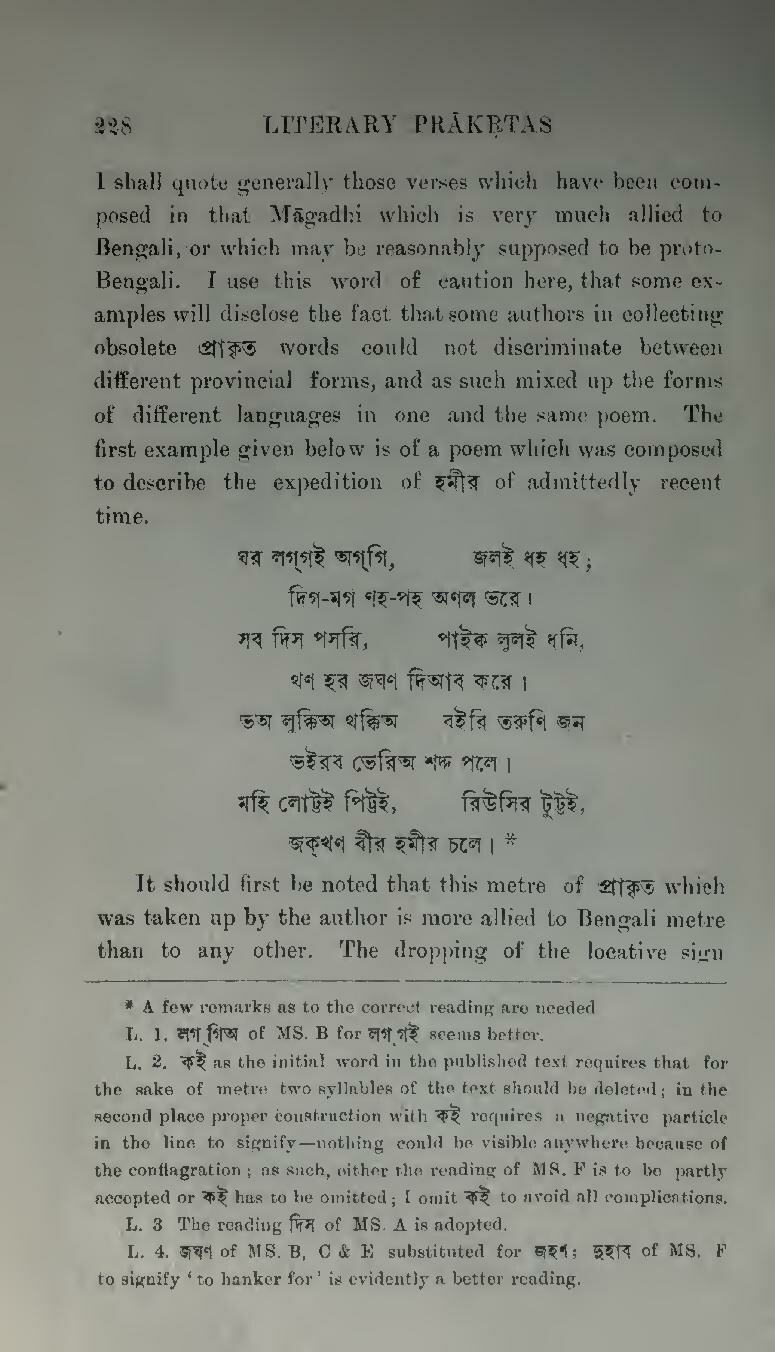I shall quote generally those verses which have been composed in that Māgadhi which is very much allied to Bengali, or which may be reasonably supposed to be proto-Bengali. I use this word of caution here, that some examples will disclose the fact that some authors in collecting obsolete প্রাকৃত words could not discriminate between different provincial forms, and as such mixed up the forms of different languages in one and the same poem. The first example given below is of a poem which was composed to describe the expedition of হমীর of admittedly recent time.
ঘর লগ্গই অগ্গি,জলই ধহ ধহ;
দিগ-মগ ণহ-পহ অণল ভরে৷
সব দিস পসরি,পাইক্ব লুলই ধনি,
থণ হর জঘণ দিআব করে৷
ভঅ লুক্কিঅ থক্কিঅবইরি তরুণি জন
ভইরব ভেরিঅ শদ্দ পলে৷
মহি লোট্টই পিট্টই,রিউসির টুট্টই,
জক্খণ বীর হমীর চলে৷[1]
It should first be noted that this metre of প্রাকৃত which was taken up by the author is move allied to Bengali metre than to any other. The dropping of the locative sign
- ↑ A few remarks as to the correct reading are needed.
L. 1. লগ্গিঅ of MS. B for লগ্গই seems better.
L. 2. কই as the initial word in the published text requires that for the sake of metre two syllables of the text should be deleted; in the second place proper construction with কই requires a negative particle in the line to signify—nothing could be visible anywhere because of the conflagration; as such, either the reading of MS. F is to be partly accepted or কই has to be omitted; I omit কই to avoid all complications.
L. 3. The reading দিস of MS. A is adopted.
L. 4. জঘণ of MS. B, C & E substituted for জহণ; দুহাব of MS. F to signify 'to hanker for' is evidently a better reading.
